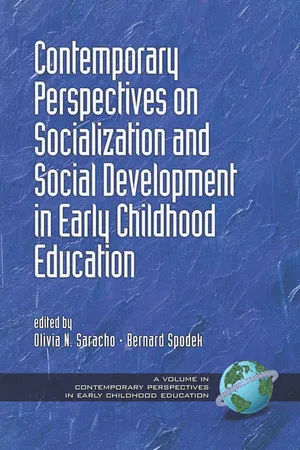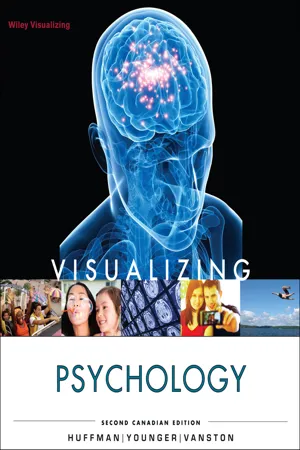Psychology
The Effects of Learning on Development
The effects of learning on development refer to the impact that acquiring new knowledge and skills has on an individual's cognitive, emotional, and social growth. This process shapes an individual's behavior, thinking patterns, and overall development, influencing their ability to adapt to new situations and challenges. Learning experiences can lead to changes in neural pathways and brain structures, contributing to cognitive and emotional development.
Written by Perlego with AI-assistance
Related key terms
1 of 5
7 Key excerpts on "The Effects of Learning on Development"
- eBook - ePub
Developmental Psychology for the Helping Professions
Evidence-Based Practice in Health and Social Care
- Brian Sheldon(Author)
- 2016(Publication Date)
- Palgrave Macmillan(Publisher)
3 The Influence of Learning on Development Behavior is a function of its consequences. —B.F. Skinner (1953)What Skinner says in this quote is somewhat true and, to say the least, was a useful corrective in its time to the then dominant brands of mentalistic psychology, which saw (somewhat magically) individuals largely as the instigators of behavioural reactions to the environment that had shaped them. Where else do thoughts, the supposed causes of behaviour, come from? The mind? What shapes that? Where is it to be found but in the brain? Is it a product or a cause? How could the mind be a cause if it is a non-material, non-weighable, non-dissectible ‘something’ with ghostly properties? You may be puzzled, but what are you puzzled with? Your brain has to be the logical answer (see Swaab, 2014; Ryle, 1949). But then, brains develop, they do not arrive with us fully formed. Therefore, how much of the development is inside-out and how much outside-in?Modern developmental psychology suggests the following:□ Human development largely unfolds from within. It unfolds easily if the environment supports the genetic ‘plan’, or slowly and falteringly if it does not (see Ridley, 2003).□ Yesterday’s environments are still inside us through conditioning and so are strong influencers of today’s behaviour, not only through memory (the most amazing of all psychological abilities, nothing less than an evolutionary adaptation to time) but via the stimuli to which we have been sensitized, the skills that we have (or have not) learned and their emotional/motivational accompaniments.Much of what makes us truly human, most of what makes us individuals rather than ‘clones’, much of what gives us a discernable personality – made up of semi-predictable patterns of behaviour, emotional reactions and thinking styles – is the product of learning. As we have seen, we get some help or hindrance from genetic endowment and are far from being tabulae rasae - No longer available |Learn more
- (Author)
- 2014(Publication Date)
- College Publishing House(Publisher)
______________________________ WORLD TECHNOLOGIES ______________________________ Chapter 7 Developmental Psychology Developmental psychology , also known as human development , is the scientific study of systematic psychological changes that occur in human beings over the course of their life span. Originally concerned with infants and children, the field has expanded to include adolescence, adult development, aging, and the entire life span. This field examines change across a broad range of topics including motor skills and other psycho-physiological processes; cognitive development involving areas such as problem solving, moral understanding, and conceptual understanding; language acquisition; social, personality, and emotional development; and self-concept and identity formation. Developmental psychology includes issues such as the extent to which development occurs through the gradual accumulation of knowledge versus stage-like development, or the extent to which children are born with innate mental structures versus learning through experience. Many researchers are interested in the interaction between personal characteristics, the individual's behavior, and environmental factors including social context, and their impact on development; others take a more narrowly focused approach. Developmental psychology informs several applied fields, including: educational psychology, child psychopathology, and forensic developmental psychology. Developmental psychology complements several other basic research fields in psychology including social psychology, cognitive psychology, ecological psychology, and comparative psychology. - Lorelle J. Burton, Drew Westen, Robin M. Kowalski(Authors)
- 2022(Publication Date)
- Wiley(Publisher)
CHAPTER 15 Physical and cognitive development LEARNING OUTCOMES After studying this chapter, you should be able to: 15.1 describe some of the basic issues in developmental psychology 15.2 distinguish between the three main types of research design used by developmental psychologists 15.3 describe how physical development occurs across the life span and discuss its impact on psychologi- cal functioning 15.4 describe how perceptual and cognitive development occurs in infancy, childhood and adolescence 15.5 describe the cognitive changes associated with ageing. CONCEPT MAP Physical and cognitive development Issues in developmental psychology • Nature and nurture both contribute to development, and their roles are not easily separated because environmen- tal events often turn genes on and off. • Human development is characterised by critical periods — central to specifc types of learning that modify future development. • A contentious issue is whether development occurs in stages (relatively discrete steps through which every- one progresses in the same sequence) or is continuous (involving steady and gradual change). Studying development • Cross-sectional studies compare groups of participants of different ages at a single time to provide a picture of age differences. • Longitudinal studies assess the same individuals over time, providing the opportunity to assess age changes. • Sequential studies minimise cohort effects by studying multiple cohorts longitudinally. Physical development and its psychological consequences • The prenatal period is divided into three stages: the germinal, embryonic and fetal periods. • At birth, infants possess many adaptive reflexes, such as rooting and sucking, which help ensure that the infant will get nourishment; motor development follows a universal sequence. • Growth rates for females and males are roughly equal until age 10.- eBook - PDF
- Olivia Saracho, Bernard Spodek(Authors)
- 2015(Publication Date)
- Information Age Publishing(Publisher)
Domain-general cognitive processes, such as attention, memory, and problem solving, are adapted to problems at hand (Bjorklund & Pelle-grini, 2002). For this type of learning to occur in an effective and efficient way, learners need to capitalize on available resources and one critical resource is found in the social context. Certain species-level characteristics, specifically the immaturity of the infant brain, the vast learning potential of the organism, and the long period of dependence on mature members, ensure that infants and chil-dren will have extensive contact with, and therefore opportunities to learn from, people who already know much of what a child needs to learn and who are invested in the child physically and emotionally (Bjorklund & Pel-ligrini, 2002). Over development, more experienced and knowledgeable partners facilitate children’s learning and development through the sup-port, guidance, modeling, and other forms of assistance they provide. Learning in social situations with more experienced partners is not simply a process of transmitting knowledge and skills to the less experienced part- Cognitive Development in Social Context 81 ner. It is a socially constructed process and even young infants play an active role in learning in social context, as evident in the socially related biases of the human neonate toward patterns in human faces, speech, and social interaction (Gauvain, 2001). From the vantage of evolutionary psy-chology, cognitive development is inseparable from the social context in which it occurs. The social context is a particularly fertile source for cognitive develop-ment. It includes information about unique social aspects of the develop-mental context as well as information about culturally valued skills—the type of skills children need to obtain competence in their community. - eBook - PDF
- Karen R. Huffman, Catherine A. Sanderson(Authors)
- 2013(Publication Date)
- Wiley(Publisher)
As you might expect, studying development across the entire life span is a monumental task, so we’ve organized this chapter into three major sections— physical, cognitive, and social-emotional development. Before we begin, we need to briefly examine the research issues and methods psychologists use to study development. ■■ STUDYING DEVELOPMENT RETRIEVAL PRACTICE While reading the upcoming sections, respond to each Learning Objective in your own words. Then compare your responses with those found at www.wiley.com/college/huffman. 1 SUMMARIZE the three most important debates or questions in developmental psychology. 2 CONTRAST the cross-sectional research design with the longitudinal research design. Just as some parents carefully document their child’s progress throughout his or her life span, the field of developmental psychology studies growth and change throughout the eight major stages of life—from conception to death, or “womb to tomb” (Table 9.1) . Their studies have led to three key theoretical issues. Theoretical Issues Almost every area of research in human development frames questions around three major issues: 1. Nature or nurture? How do both genetics (nature) and life experiences (nur- ture) influence development? According to the nature position, development is largely governed by automatic, genetically predetermined signals in a process known as maturation . Just as a flower unfolds in accord with its genetic blue- print, humans crawl before we walk, and walk before we run. In addition, naturists believe there are critical periods , or windows of opportunity, that occur early in life when exposure to certain stimuli or expe- riences is necessary for proper development. For example, many newborn ani- mals form rigid attachments to particular stimuli shortly after birth, a process called imprinting (Figure 9.1 ) . - eBook - PDF
- Karen R. Huffman, Alastair Younger, Claire Vanston(Authors)
- 2013(Publication Date)
- Wiley(Publisher)
9 Lifespan Development I: Physical and Cognitive Development I f you have ever spent time at a daycare centre, you were probably struck by the sight of many exuber- ant children laughing, shrieking, and jostling for atten- tion from those entrusted with their care. Yet amid this barely controlled chaos, babies learn to crawl, toddlers learn not to bite one another, and preschoolers learn their ABCs. Day by day, every child grows a little stron- ger, a little more independent. Over a lifetime, every person undergoes many physical changes. These changes are most striking in early childhood because they happen so rapidly and are so visible. But everyone is in a state of constant change and development throughout his or her entire life. The typical person will be many different people in his or her lifetime—infant, child, teenager, adult, and senior. Would you like to know more about yourself at each of these ages? In the next two chapters, we will explore research in developmental psychology. We will begin this chapter by studying how developmen- tal psychologists conduct their research. Then we will look at changes in our physical and cognitive develop- ment from conception to death. In Chapter 10, we will examine important aspects of our social, moral, and personality development across the lifespan. To empha- size that development is an ongoing, lifelong process, throughout the next two chapters we will trace physical, cognitive, social, moral, and personality development— one at a time—from conception to death. This topical approach will allow us to see how development affects an individual over the entire lifespan. - Michele Hoffnung, Robert J. Hoffnung, Kelvin L. Seifert, Abi Brooker, Sonja Ellis, Damien Riggs, Wayne Warburton, Elyse Warner(Authors)
- 2022(Publication Date)
- Wiley(Publisher)
Skinner’s operant conditioning theory emphasises the influence of reinforcement, punishment, extinction and shaping on developmen- tal change. Bandura’s social cognitive theory emphasises recipro- cal and interactional processes involving direct observational learn- ing, modelling and vicarious reinforcement. Learning theories have applications across the lifespan, particularly in helping us to under- stand the influence of learning on development and helping indi- viduals modify or eliminate problematic behaviours and learn new, desirable behaviours. 2.4 Justify how cognitive developmental theories help us to understand changes in thinking and problem solving through- out the lifespan. Piaget’s theory explains the underlying structures and processes involved in the development of children’s thinking and problem solv- ing. Piaget suggested that thinking develops in a series of increasingly complex and sophisticated stages, each of which incorporates the achievements of those preceding it. The developing person achieves new ways of thinking and problem solving through the joint processes of assimilation (fitting a new scheme into an existing one) and accommodation (changing an existing scheme to meet the challenges of a new situation). Neo-Piagetian theorists Case and Fischer emphasise the role of mental space, skills acquisition, and information-processing capacity in cognitive development. Information-processing theory focuses on the steps involved in thinking. Information is stored in the sensory register, then in STM, and finally in LTM. As people grow older, they experience cognitive changes in control processes, metacognition and their knowledge bases. Cognitive theories help us to understand and foster intellectual development, problem-solving abilities and critical thinking skills throughout the lifespan. 2.5 Describe how contextual approaches to development have broadened our view of developmental change.
Index pages curate the most relevant extracts from our library of academic textbooks. They’ve been created using an in-house natural language model (NLM), each adding context and meaning to key research topics.






